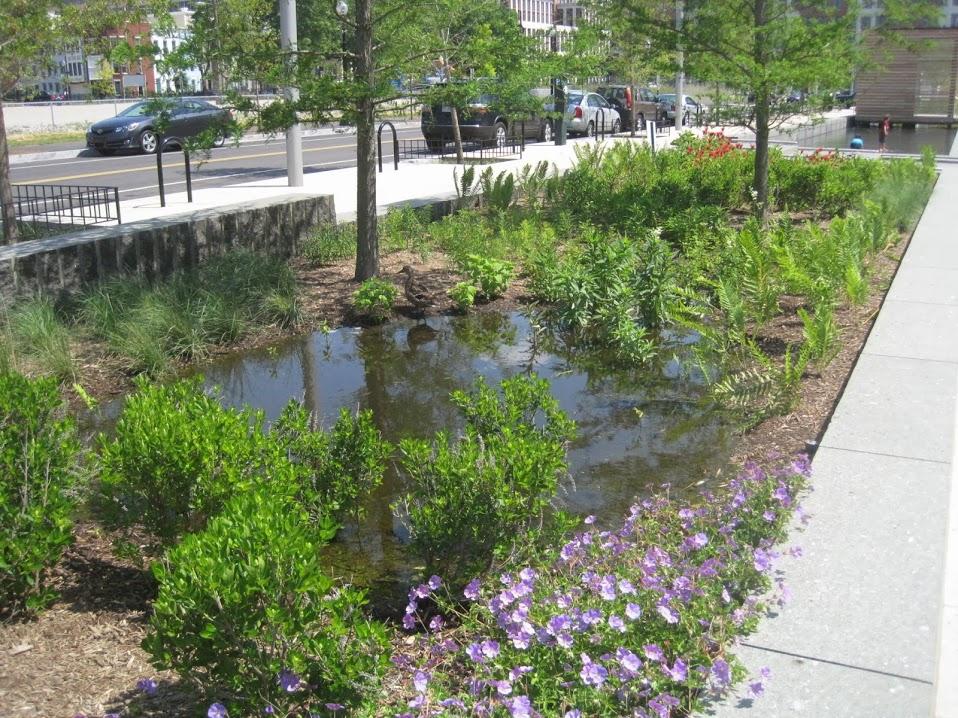A new brief on the economic benefits of green infrastructure demonstrates the dollars and “sense” behind trails, urban trees and other landscapes, making a case for communities to “scale up” nature-based solutions. Developed by UMD’s Environmental Finance Center for the American Society of Landscape Architects (ASLA), the summary will be shared with global and U.S. policymakers at the UN Framework Convention on Climate Change COP 29 in Baku, Azerbaijan this month.
"Projects designed by landscape architects can bring a wide range of environmental and economic benefits to communities, but adding nature-based features or innovative sustainability elements to projects may be considered a luxury,” said EFC Program Manager Stephanie Dalke. “We hope this brief demonstrates that nature-based solutions provide many benefits that can be counted. By measuring these values, communities can make smart, targeted decisions that maximize the benefits that matter most to them."
The brief offers an overview of nature-based economic benefits in five key areas: health and livability, expanded investment and sustainable jobs, increased biodiversity, carbon sequestration and improved resilience. A supplementary analysis offers lessons from 175 case studies in the U.S.
“We listened to global policymakers last year at COP28 in Dubai. They seek to scale up investment in nature-based solutions but need to know how much these solutions cost and their economic benefits,” said ASLA CEO Torey Carter-Conneen, in a statement from the ASLA.
Here are five takeaways from the EFC brief:
- The World Bank estimates that every $1 invested in nature-based solutions, from tree canopies to permeable surfaces, results in $4 of environmental, social and economic benefits.
- Pollinators—butterflies, bees and other insects—ferry in an estimated $301 billion annually, making the case for developing and preserving biodiverse habitats.
- Urban and rural forests not only boost human health benefits, they provide an estimated $2.2 to $19 billion in air pollution removal benefits a year.
- Cities on average can be one to seven degrees hotter than greener, suburban and rural areas, known as heat island effect. But, shade-creating green infrastructure can bring the thermometer down by two to nine degrees.
- Healthy and restored waterways provide recreation, tourism and health benefits, as well fresh water, with an estimated value of $1,000-$8000 per acre a year.

